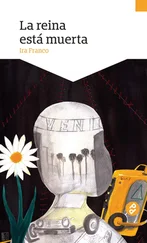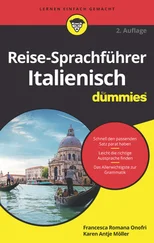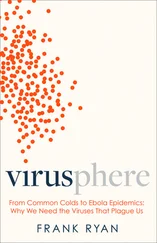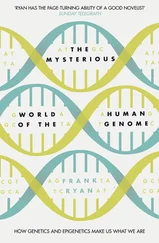‘That’s right.’
A surprising idea had entered my mind. From my background knowledge of evolutionary biology, and in particular of evolutionary virology, I could assume that virologists, sharing the same conventional viewpoint as I had up to now, would assume that the viruses, given that they mutate at a vastly faster rate than the mammals, would fast-track their own evolutionary trajectories, to stay close to the evolutionary pathways of their mammalian hosts. But now, thanks to the surprising idea that Terry Yates had planted in my mind, I asked myself the question:
What if both the virus and its mammalian host are influencing one another’s evolution, one evolutionary tree interacting with the other, over the vast time periods of their co-evolution ?
I spent a good deal longer than I had initially envisaged with Professor Yates, visiting the Sevilleta and enjoying the courtesy of a stay with him and his family, when I had ample opportunity to examine his work, and to think about his ideas in more detail. When I put my question to Yates himself, he could provide no definite answers other than the observation that viruses and hosts appeared to be following very close co-evolutionary trajectories. Nevertheless, over the months that followed, his explanation of virus-mammalian co-evolution intrigued me deeply and it caused me to look much harder at the relationships between viruses generally and their hosts. In particular I spoke to other biologists, and especially virologists, and I explored the literature far and wide. As far as I could determine, nobody was even thinking along the lines of viruses and hosts influencing each other’s evolution. And thus it would appear that, entirely by chance, I had stumbled across an idea that, if true, would have major implications. It was one of those exciting moments a scientist hopes will come along at some stage of his or her career, a new idea that makes you think long and hard, and even to question some of those ordinary assumptions you have carried with you since your undergraduate years.
What, then, is a virus?
Biologists will differ very widely in their answers to this question. Some will quote the distinguished immunologist and writer, Sir Peter Medawar, Nobel Laureate for his work on tissue transplantation, who caricatured the virus as a piece of bad news wrapped in a protein. But this definition, however whimsical, adds little to any real understanding. Others, usually molecular biologists or geneticists, will adopt a chemical perspective, while Darwinian evolutionists – and until recently symbiologists too – are inclined to see viruses as mere agents of “horizontal gene transfer” between different species. We saw a very interesting example of this with Elysia chlorotica , when the strange retroviruses in the slug’s genome appeared to enable the transfer of key genes “horizontally” across the kingdoms of plants and animals, as represented by the alga and the slug. Another interesting perspective is that of Eckard Wimmer, a professor in the Department of Molecular Genetics and Microbiology at Stony Brook, New York, who became famous in 2002 for reconstructing the polio virus from mail-order components back in his lab. 6This experiment provoked a good deal of interest and notoriety. But what Wimmer and his co-workers wanted to do, amongst other things, was to make a conceptual, and perhaps philosophical, point. If you know the genetic formula of a virus, you can reconstruct it. They even quoted an empirical formula for the polio virus, as follows:
C332,652 H492,388 N98,245 O131,196 P7,501 S2,340
It is strange to think of an organism, even if exceedingly small, being reduced to a list of atoms. One is reminded of the bitter opposition of the gentle French naturalist, Jean-Henri Fabre, the so-called poet of entomology, who, although he greatly respected Darwin as a man and fellow scientist, opposed Darwin’s line of thinking. In Chapter VIIIof his book, More Hunting Wasps , Fabre described a ‘nasty and seemingly futile’ experiment he had conducted, rearing caterpillar-eating wasps on a ‘skewerful of spiders’. We need not consider the experiment in detail here, only Fabre’s conclusion, which led him to dismiss the concept of evolution through natural selection. In Fabre’s own words, ‘It is assuredly a majestic enterprise, commensurate with man’s immense ambitions, to seek to pour the universe into the mould of a formula … But … in short, I prefer to believe that the theory of evolution is powerless to explain [the wasp’s] diet.’
It is perfectly true that, in certain circumstances, viruses do behave like inert chemicals. Indeed, I once performed a series of experiments that proved this. When I was a medical student at Sheffield University, I was interested in how our mammalian immune system would respond to viral invasion. The penetration of such alien organisms into our bloodstream – literally the very heart of our being – would be a major, and extremely threatening, event. With the help of my mentor, Mike McEntegart, Professor of Microbiology, I set up an experiment in which I injected viruses into the bloodstream of rabbits. Some readers might react with concern about hurting experimental animals, but the virus I used was a bacteriophage, known as ΦX174 – a virus that only attacks bacteria – so the rabbits suffered no illness. Yet their adaptive immune system responded in exactly the way it should to any alien invader, with a build-up of antibodies in two waves, rising to a peak by 21 days, where a single drop of their serum would be seen to inactivate a billion viruses in mere moments.
The point I am making is that this experiment, by its very design, did not really reproduce the living behaviour of viruses. Injecting a virus into such a host was the virological equivalent of landing people, unprotected, on the surface of Mars. The circumstances were unnatural to the virus and it could neither survive nor respond, in the behavioural sense, and so it died. Had I injected smallpox, or influenza, or HIV-1, into people, the result would have been altogether different. The virus would have come alive in its natural host and a fearsome interaction, virus-with-human, would have followed. As this suggests, it is a waste of time, from the definitional perspective, to consider viruses outside of their natural ecology. Outside the host, it could be argued that a virus really does behave much as Professor Wimmer’s formula – as an inert assemblage of genes and proteins. Only in the real circumstances of its life cycle, when it interacts with its natural host, do we witness the real nature of viruses.
This is why, like Terry Yates, I take the view that viruses, in their natural life cycles, should be regarded as life forms. In this sense the extreme reductionism of depicting a virus as a list of chemicals is implicitly absurd. We might similarly contrive a chemical formula for a human being, when we would end up listing a similar collection of atoms, albeit their numbers would be far more gargantuan. People who view viruses only as chemical assemblages miss the vitally important point that viruses have arrived on the scene through a vast, and exceedingly complex, trajectory of evolution, much as we have ourselves. And though Professor Wimmer might seem to be promoting the viewpoint of a virus as inert, this is not his thinking at all. His view of viruses is much the same as my own, and that of the majority of biologists. A virus may appear inert outside its host, but when it enters the host cell, he too regards it as coming alive. And what an extraordinary life form it turns out to be – for here, in the landscape of the host cell, it has the unique ability of taking over and driving the host genome to make it manufacture new viruses.
Читать дальше












